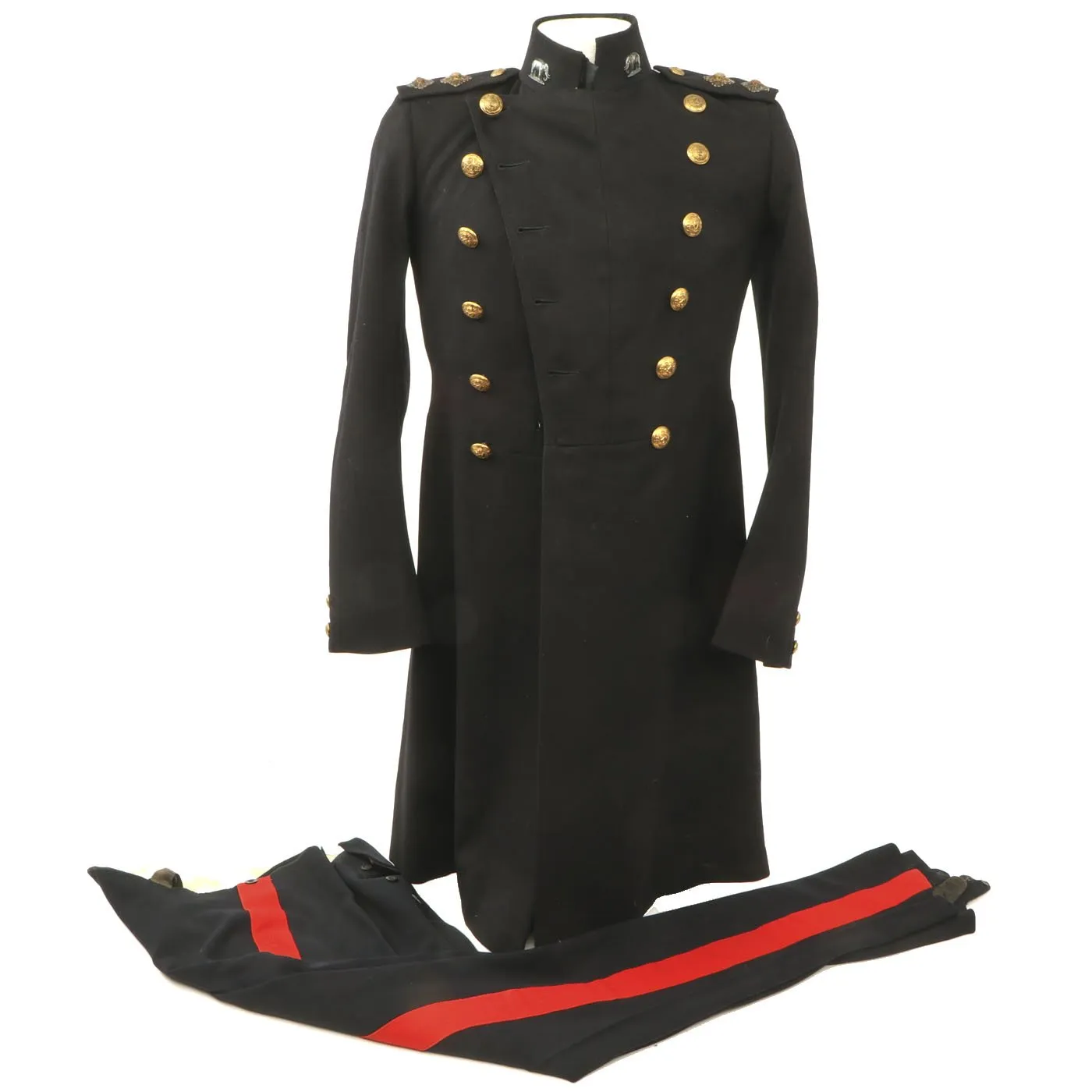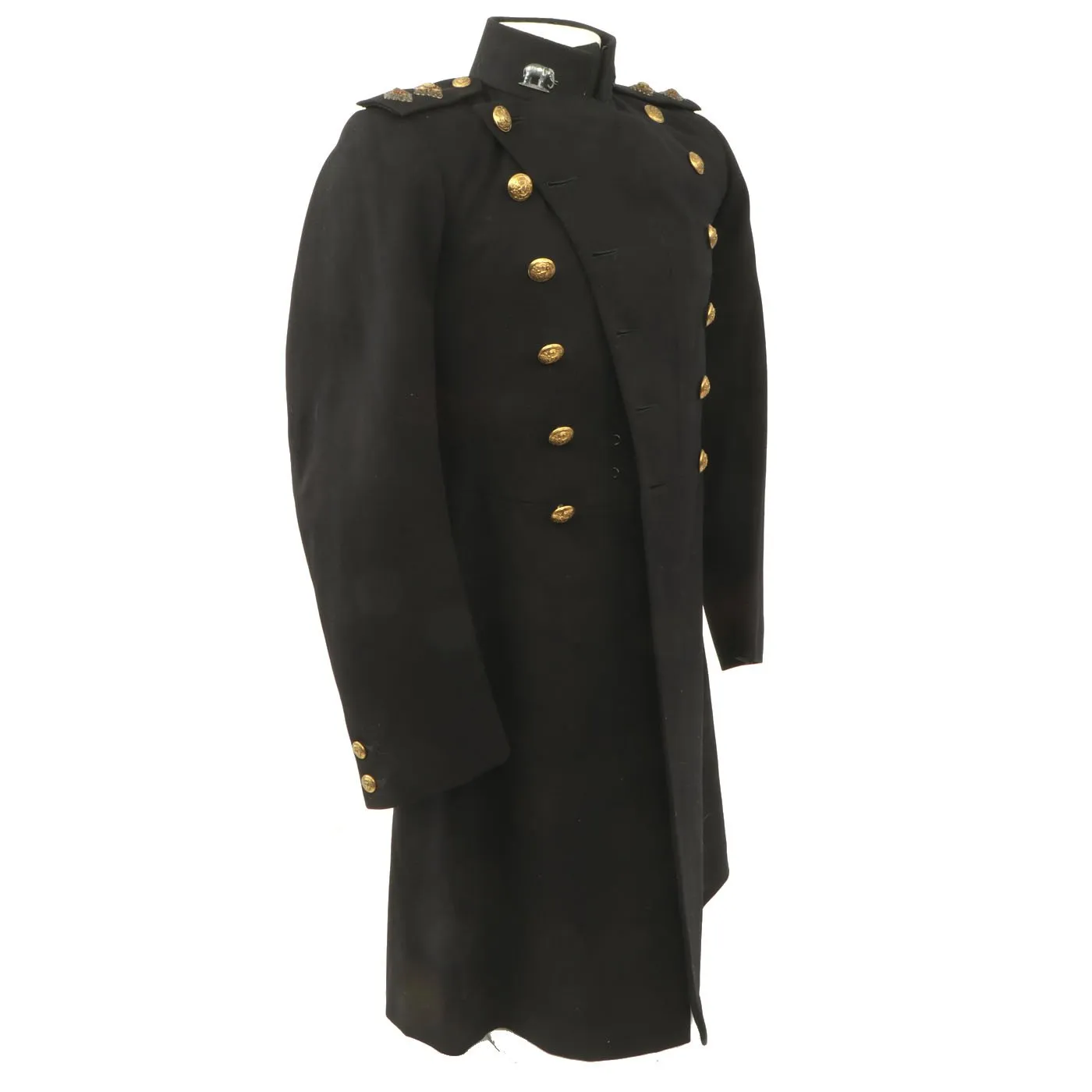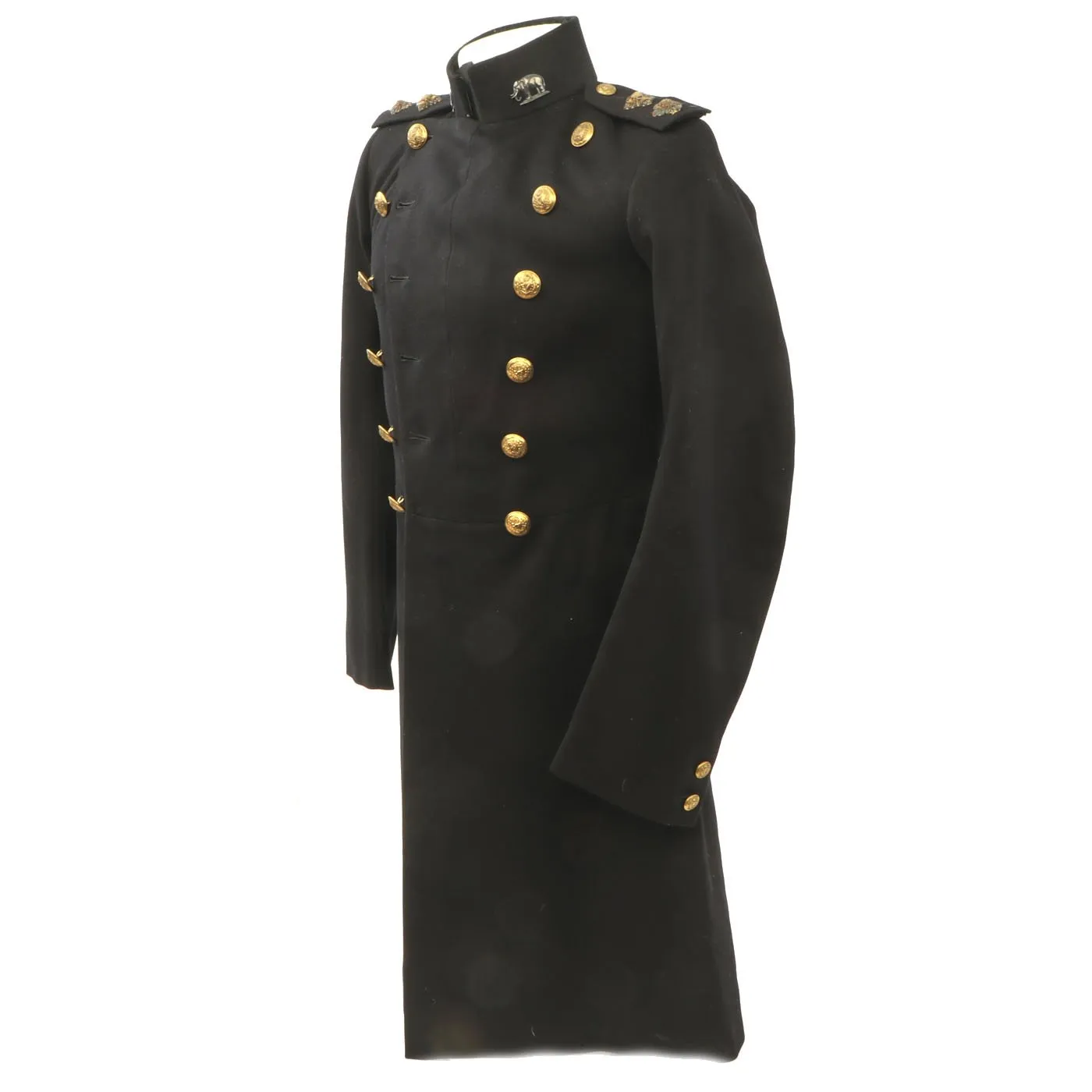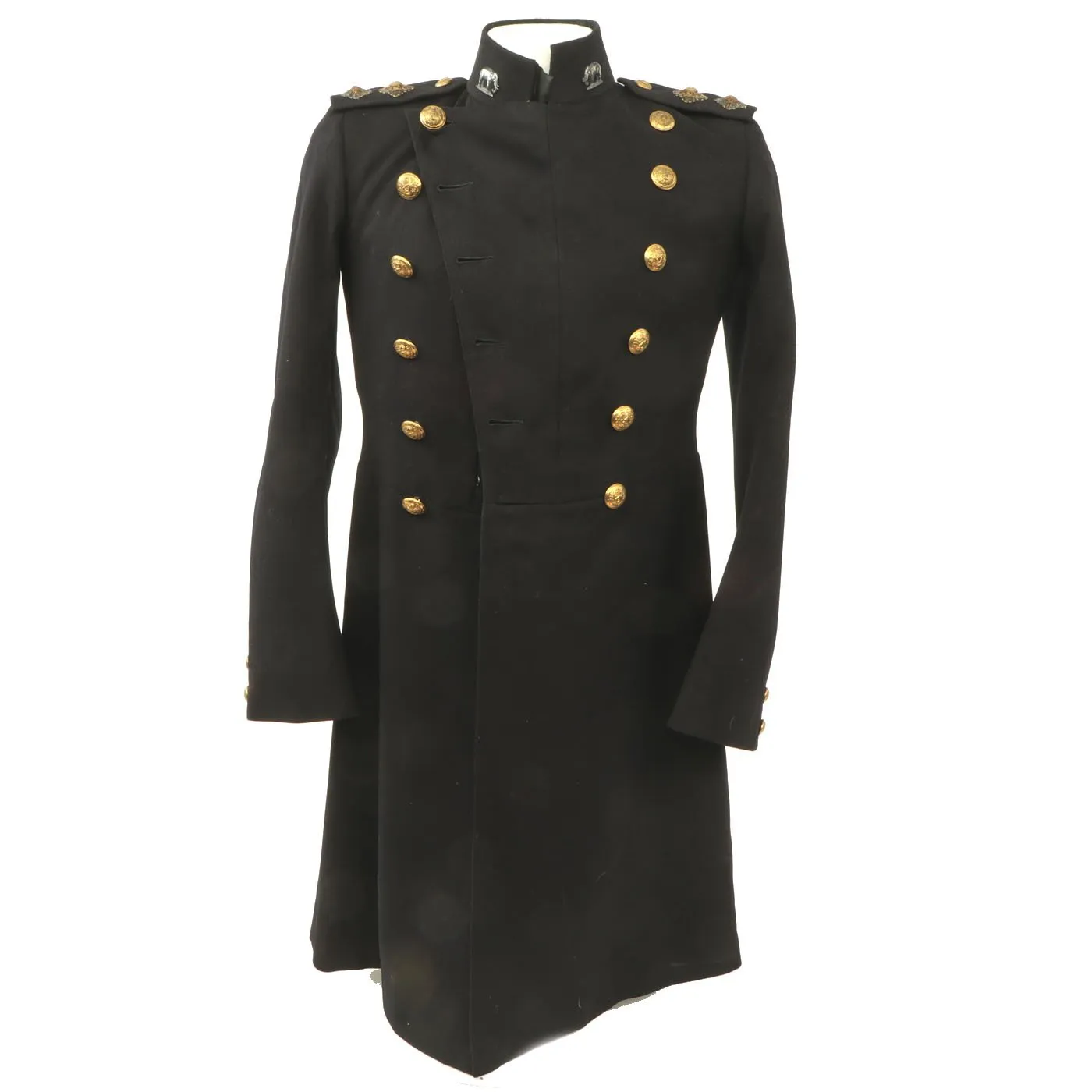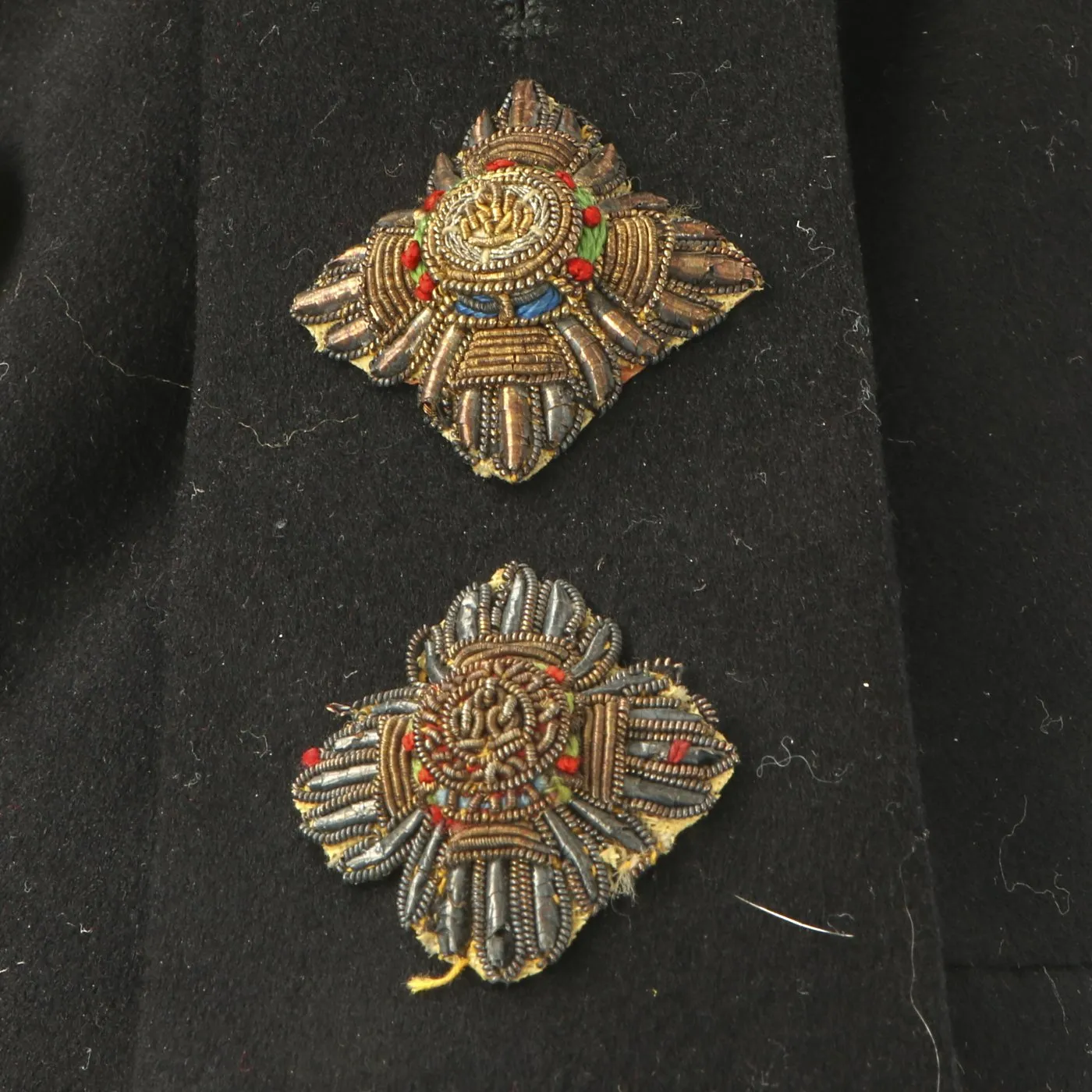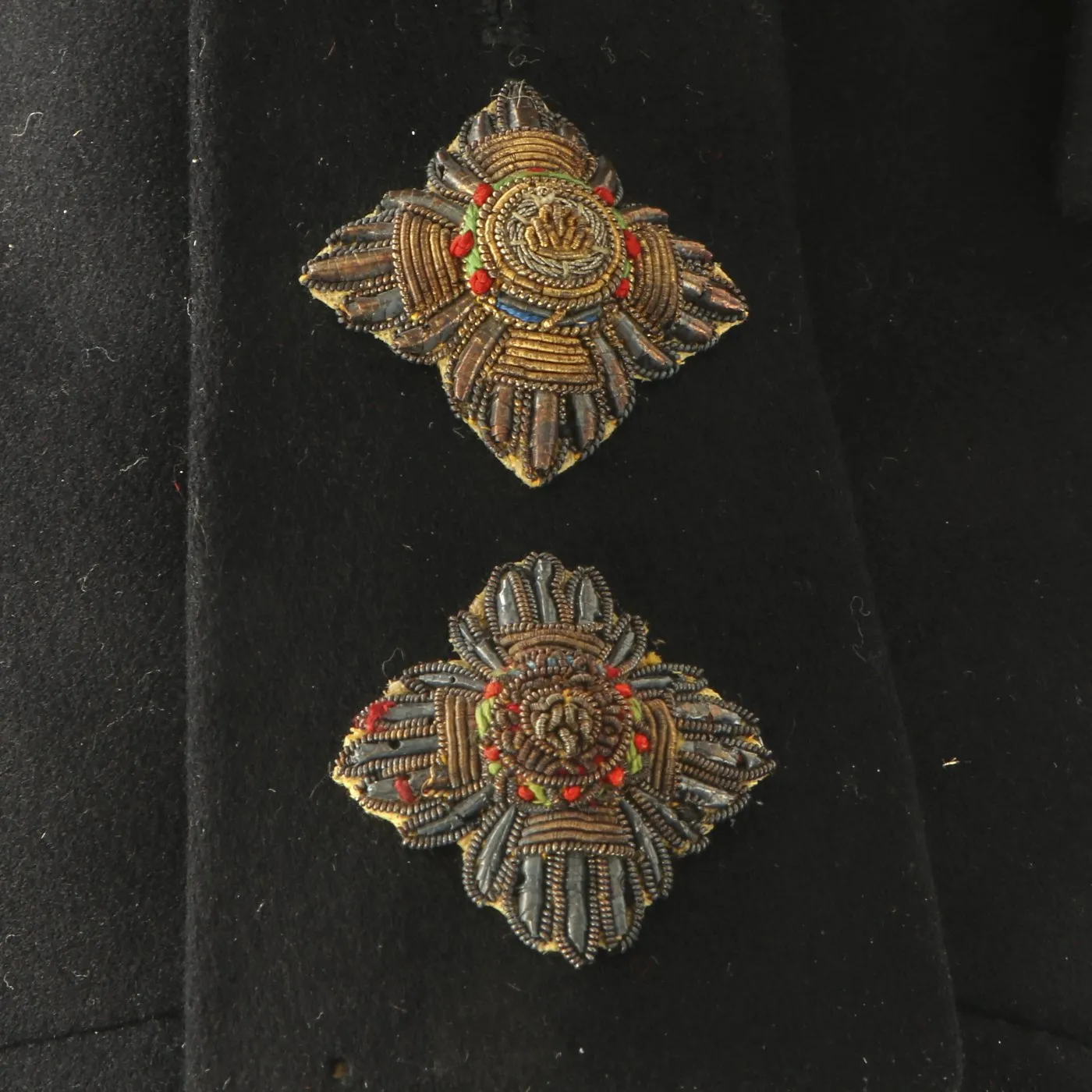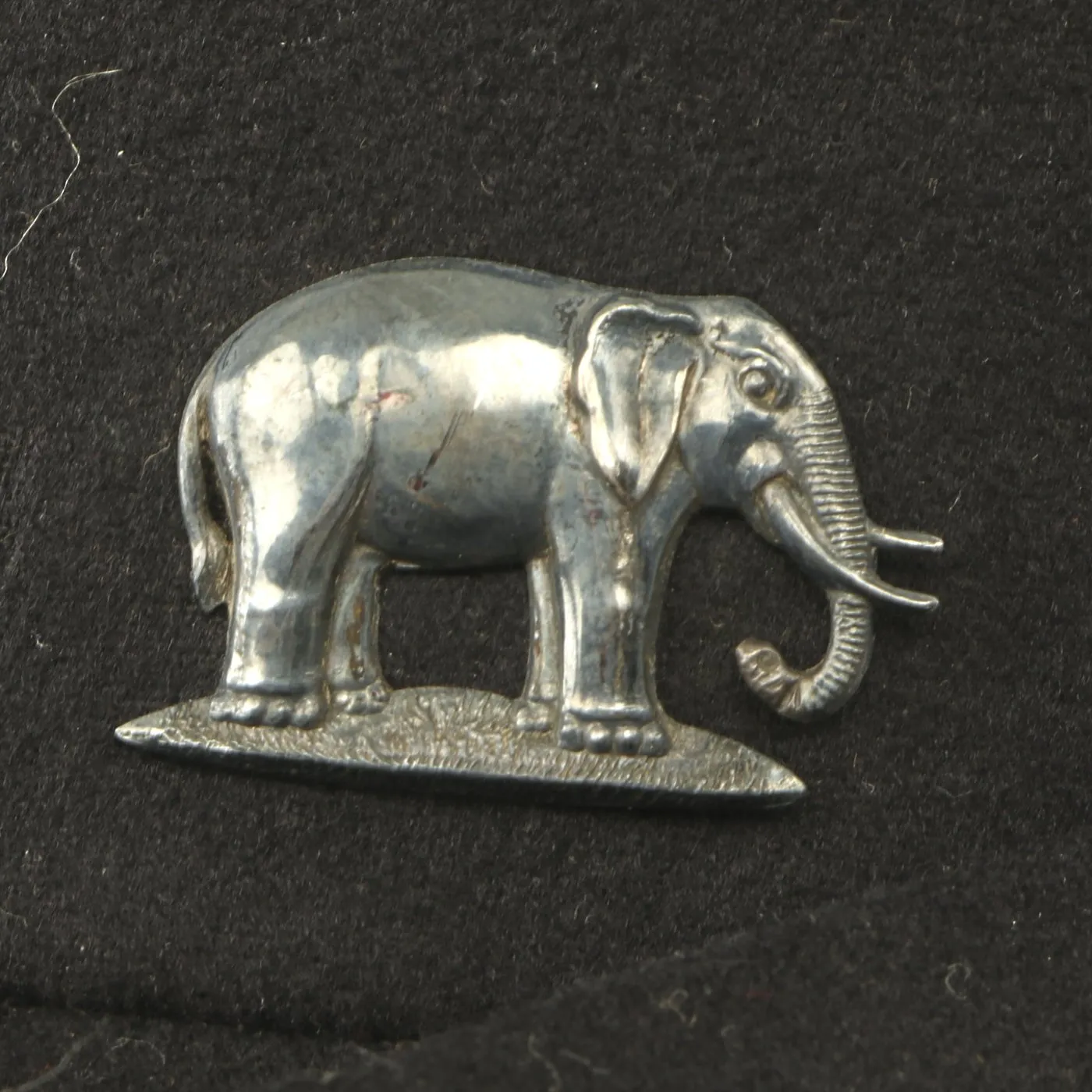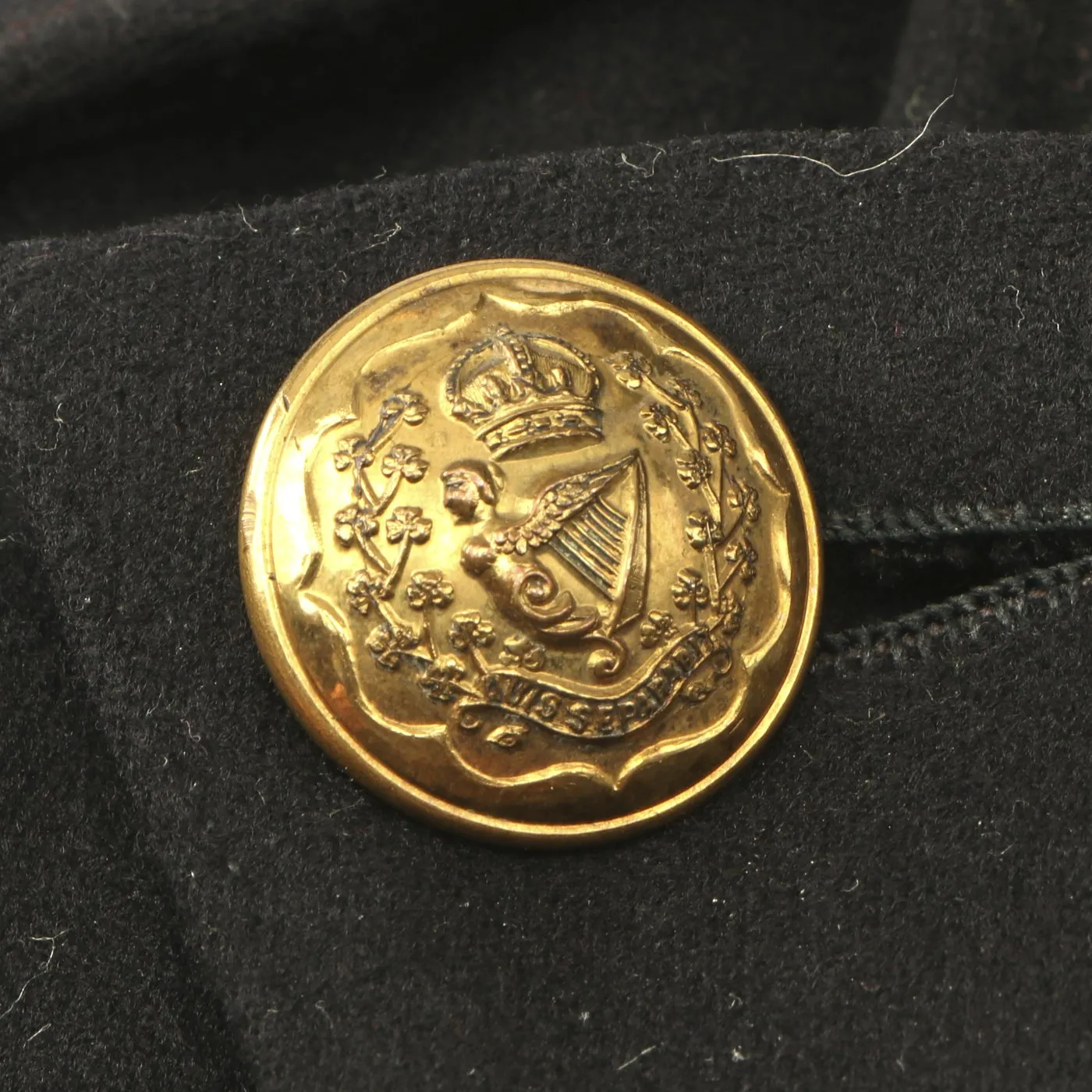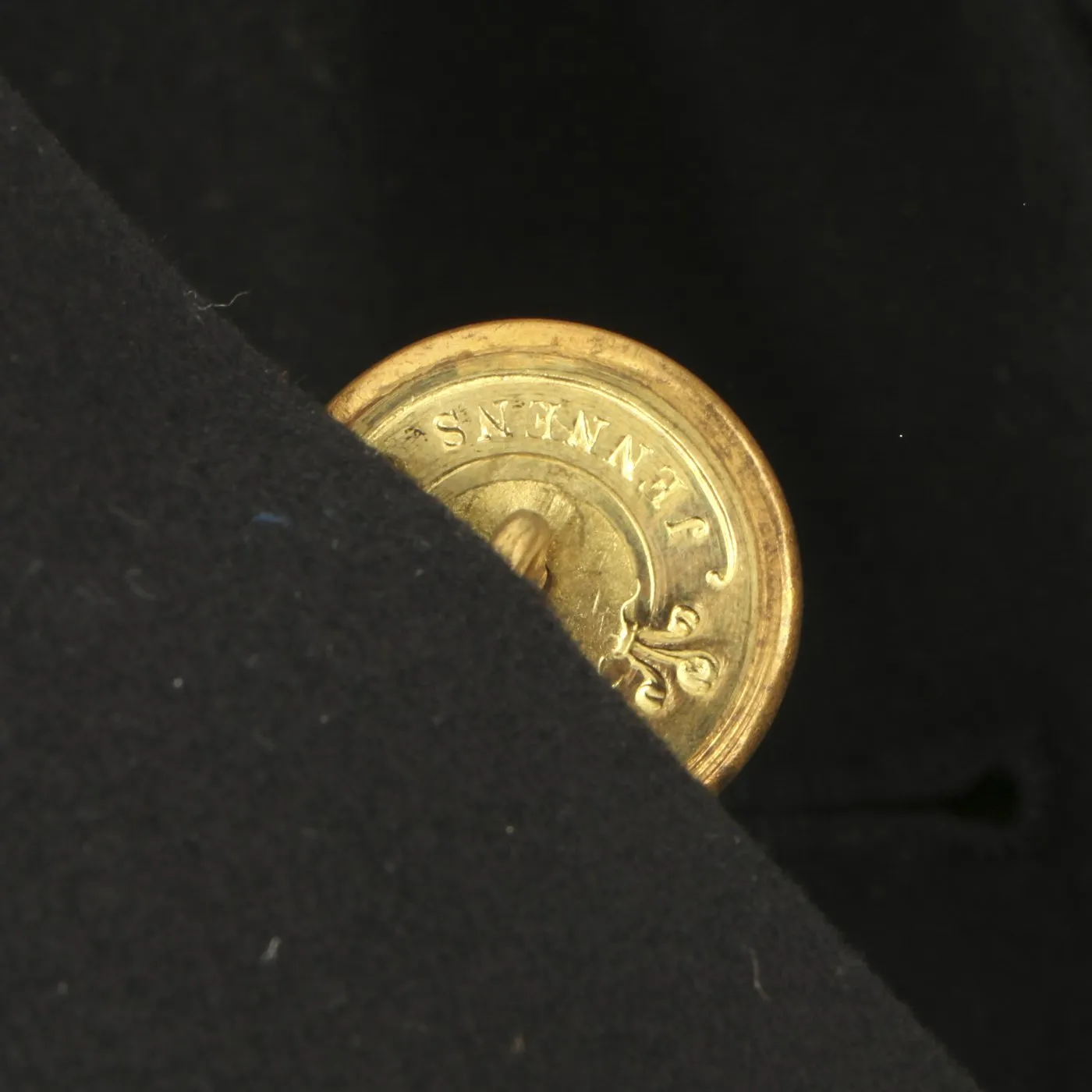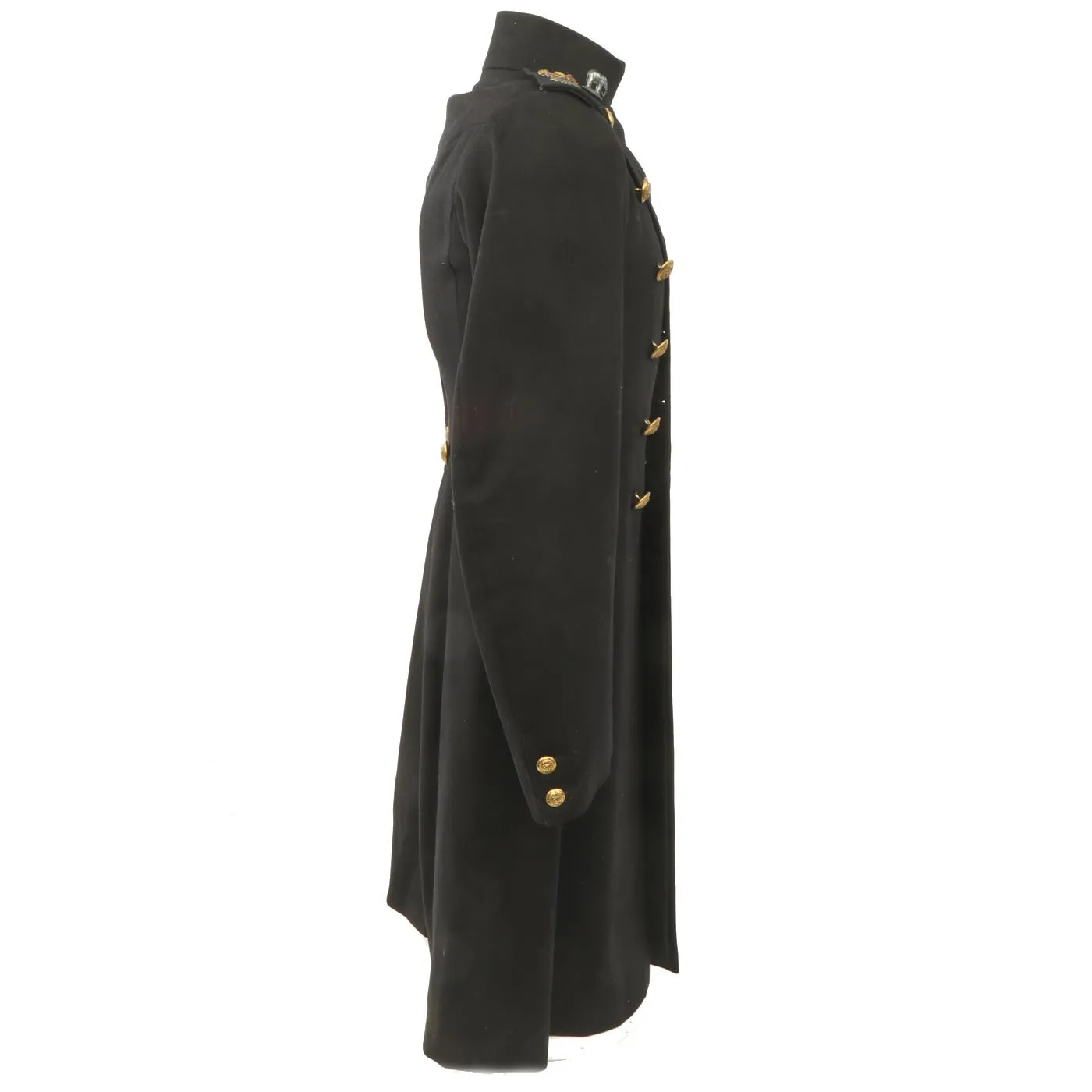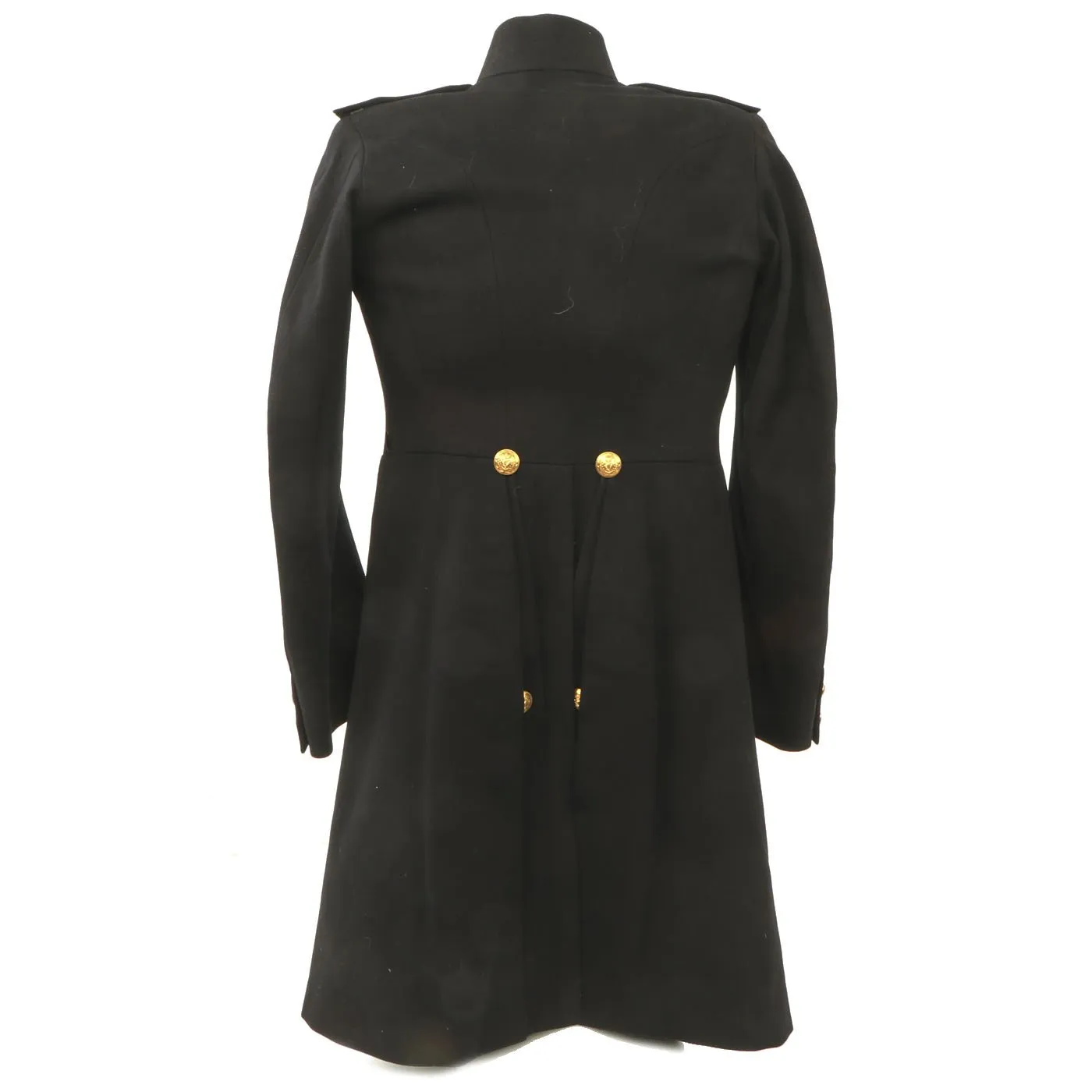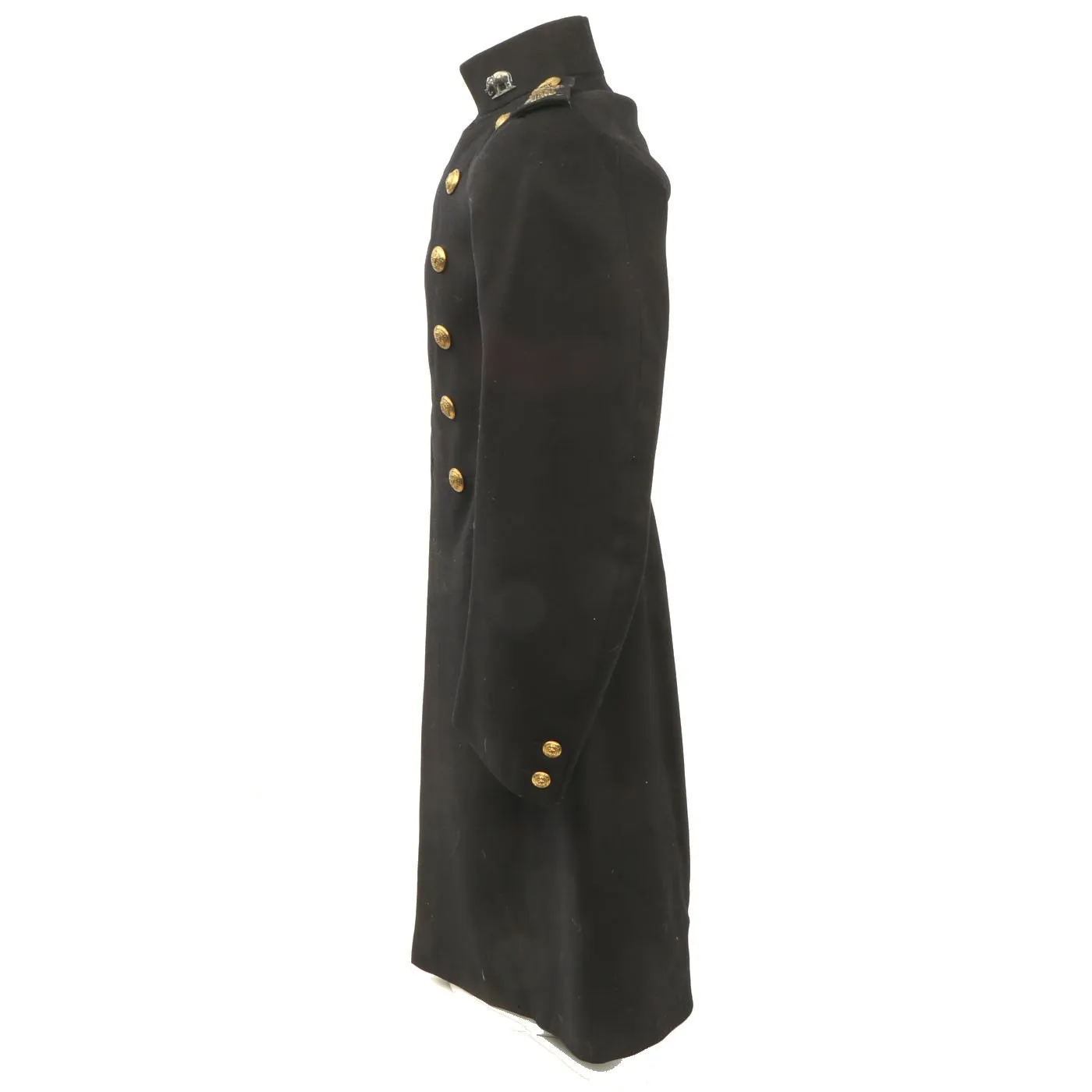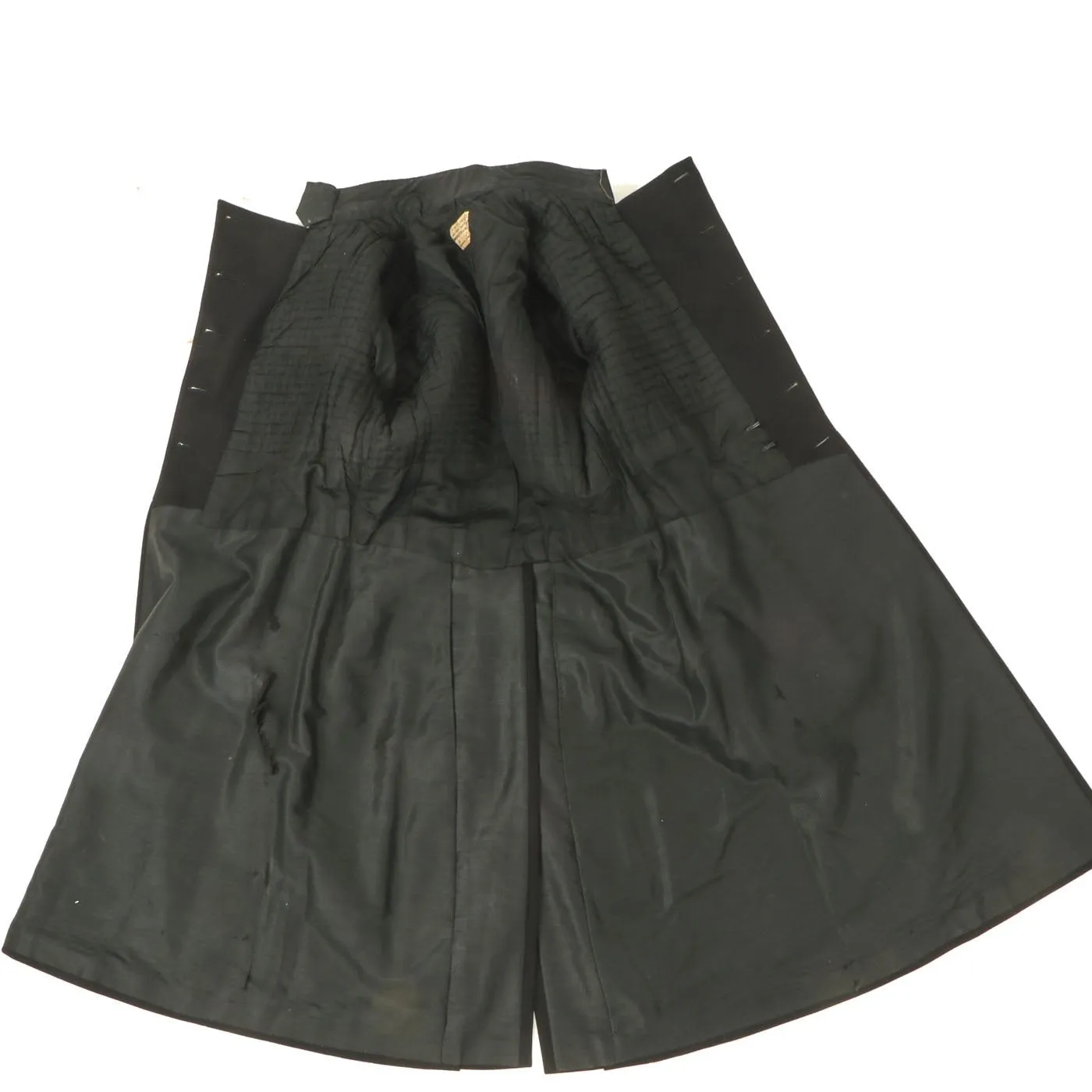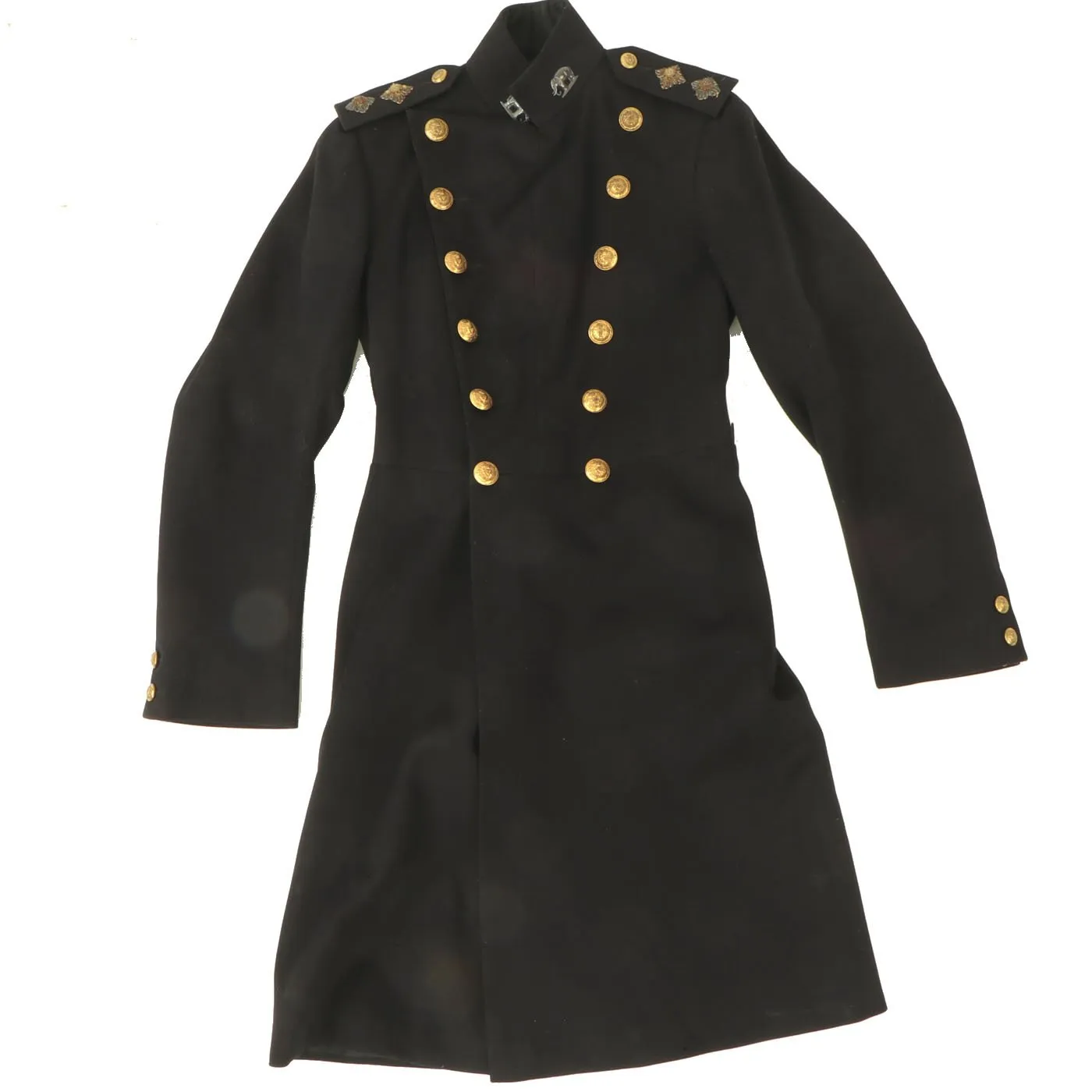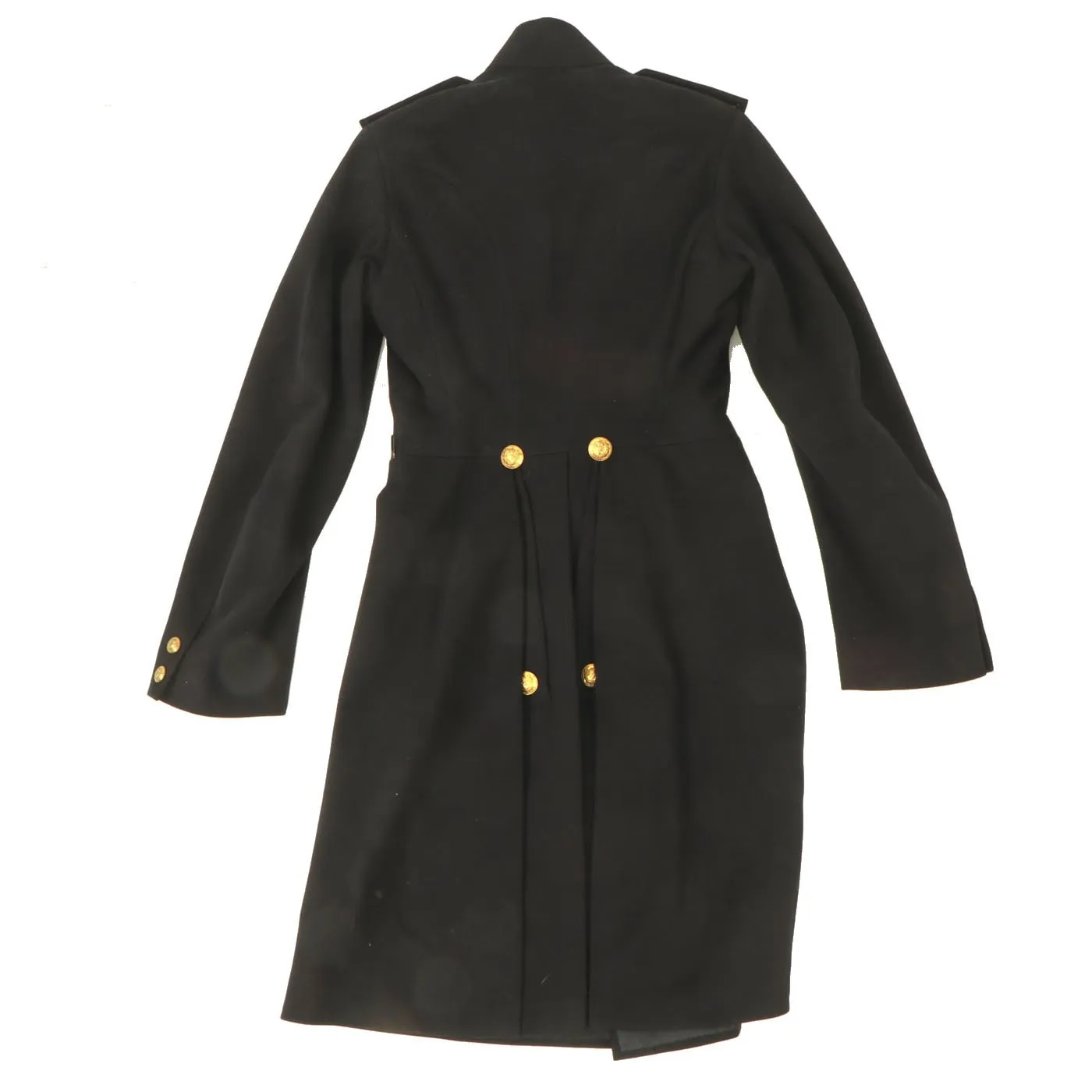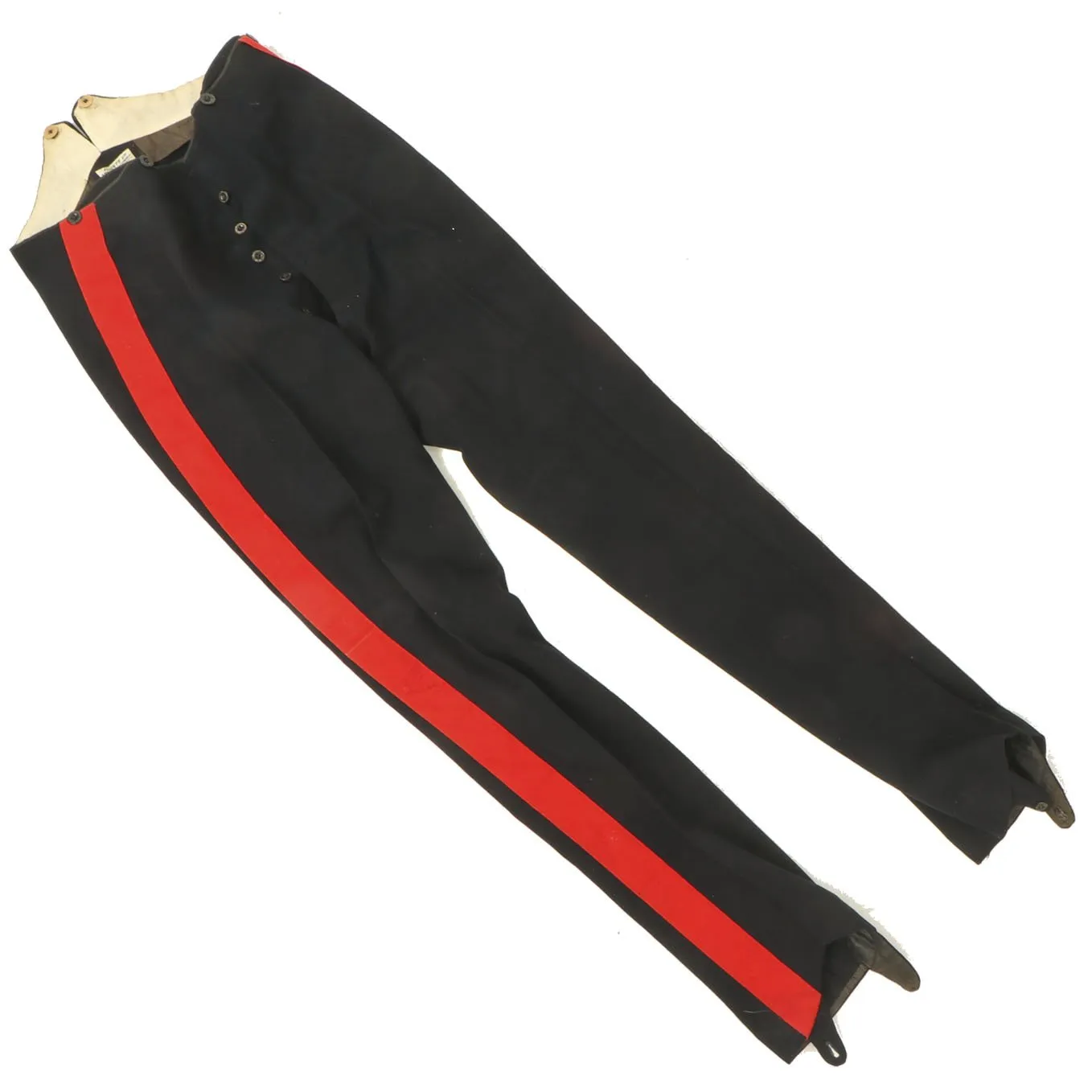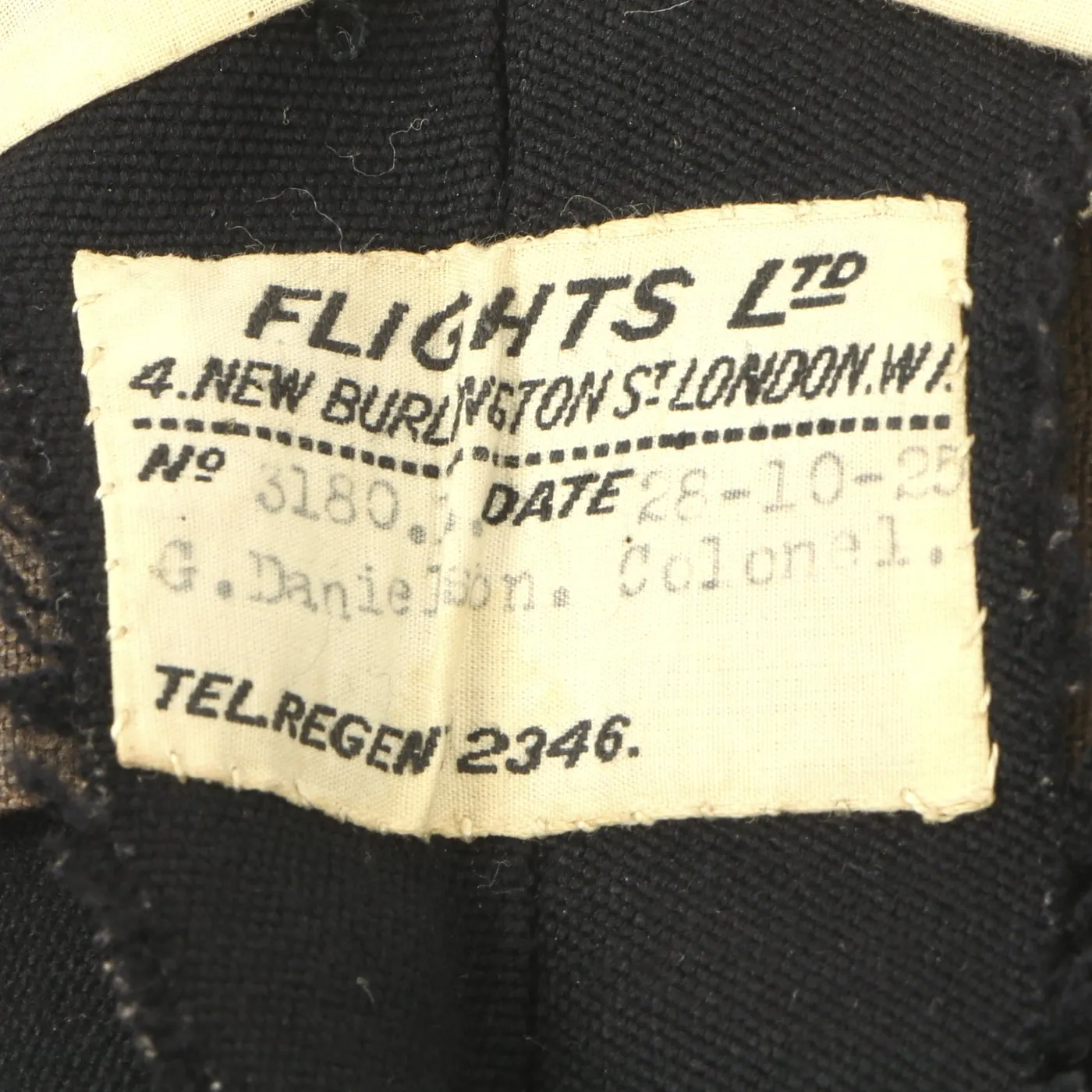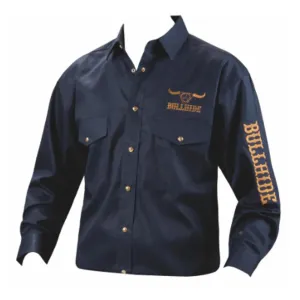Original Item: Only One Available. WWII era uniform in very good condition and features original gilt rank pips and Duke of Wellington (West Riding) collar badges . This is a officer's undress uniform of the Duke of Wellington (West Riding) complete with red striped pants. The interior has a tailor's label at the neck that reads:
F.W. FLIGHT
MILITARY OUTFITTER
WINCHESTER & ALDERSHOT
The pants has a tailors label dated October 28, 1925 and named to G. Danielson, Colonel.
Approximate Jacket Measurements"Collar to shoulder: 9”
Shoulder to sleeve: 25”
Shoulder to shoulder: 16”
Chest width: 18”
Waist width: 15”
Hip width: 21”
Front length: 42"
Second World War
1st Battalion
The Second World War was declared on 3 September 1939, and the 1st Battalion, commanded by Lieutenant Colonel Edmund Charles Beard, was immediately sent to France as part of the 3rd Infantry Brigade of the 1st Infantry Division of 1st Corps of the BEF. During the retreat to Dunkirk, the 'Dukes' formed part of the rearguard.
The 'Dukes' fought in the North African Campaign, fighting with distinction in a number of actions and gaining several Battle Honours, as part of the 3rd Infantry Brigade. They fought at the Battle of Medjez Plain and the Battle of Banana Ridge and in the Battle of Djebel bou Aoukaz. The Bou was a ridge dominating the Medjez el Bab to Tunis road.
The 'Dukes' also fought in the Italian Campaign. They took part in the Anzio Campaign, in an attempt to outflank the Gustav Line and force a German retreat from Monte Cassino. The 'Dukes' fought with distinction at the Battle of Monte Ceco in October 1944 where Captain Arthur Burns was awarded a DSO and Private Richard Henry Burton of the 1st Battalion was awarded a Victoria Cross for his courageous action in the battle.
2nd Battalion
In the Far East, the 2nd Battalion took part in the rearguard action at the Battle of Sittang Bridge in February 1942. They were trained as Chindits, to operate behind Japanese lines, who were at that time attacking India, they were formed into two columns, the 33rd and 76th,[a] to operate behind the Japanese lines during the fierce battles for Imphal and Kohima.
58th (Duke of Wellingtons) Anti-Tank Regiment
The regiment served in North Africa, Italy, Greece and Austria during the war.[59][63]
43rd AA (5th Duke of Wellingtons) Battalion
43rd AA Battalion served in 31st (North Midland) Anti-Aircraft Brigade, protecting West Yorkshire during the Blitz. In 1940 the RE AA battalions were transferred to the Royal Artillery, and it became the 43rd (5th Duke of Wellington's) Searchlight Regiment, Royal Artillery.[58][59]
In 1944 the regiment was assigned to 21st Army Group preparing for the Normandy Campaign. In the event, the regiment did not take part. However, by the autumn of 1944, the German Luftwaffe was suffering from such shortages of pilots, aircraft and fuel that serious aerial attacks on the UK could be discounted. At the same time 21st Army Group was experiencing a severe manpower shortage, particularly among the infantry. The War Office began to reorganise surplus AA regiments in the UK into infantry units, primarily for duties in the rear areas, thereby releasing trained infantry for frontline service.[64][65] On 1 October 1944, 43rd S/L Rgt was converted into 43rd (5th Bn Duke of Wellingtons) Garrison Regiment, RA. A month later, it was reorganised as an infantry battalion and redesignated 600th Regiment RA (5th Bn Duke of Wellingtons). It was the first such RA infantry regiment formed, and was sent to join Second Army in NW Europe for line of communication duties. The unit was placed in 'suspended animation' in February 1945 and its personnel drafted to other units.
1/6th and 1/7th battalions
The 1/6th and 1/7th battalions of the regiment were both assigned to the 147th Infantry Brigade, alongside the 1/5th West Yorkshire Regiment, which itself was part of the 49th (West Riding) Infantry Division. The brigade did not see service with the rest of the division in the Norwegian Campaign, but were instead sent to Iceland after it was invaded in 1940, and remained there until May 1942 when it was transferred back to the United Kingdom. On 28 February 1943, both battalions lost the '1/' prefix, becoming, simply, the 6th and 7th battalions, respectively. They both landed in Normandy on 12 June 1944 shortly after the D-Day landings of 6 June. They fought in the Battle of Normandy as part of the British Second Army in its attempts to capture the city of Caen. In particular, the 6th Battalion was severely mauled during Operation Martlet and, due to the heavy casualties sustained, was returned to the United Kingdom and disbanded, most of its men being sent to the 7th Battalion. They were replaced in the brigade by the 1st Battalion, Leicestershire Regiment. The 7th DWR continued to fight in the Normandy Campaign in the Second Battle of the Odon, and clearing the Channel Ports in Operation Astonia.
After the failure of Operation Market Garden, the 7th Battalion was stationed at the Nijmegen bridgehead, in late November, and around Haalderen. Just after midnight of 1 December the Battalion was being hit by heavy artillery, mortar and Spandau fire. As the night progressed they came under attack from multiple infantry elements of the German 6th Parachute Division in an attempt to capture the Nijmegen bridge. Fighting intensified, taking in house to house fighting throughout Haalderen and Gendt During the nights of 3–4 December, with small arms and grenades, with the Dukes 'A Company' Headquarters in the village school. Fighting was very confused and movement limited due to heavy flooding of the ground from the breached canals and river. A German officer, 2nd Lieutenant Heinich, 5 Coy 16 Parachute Regiment, was captured by members of 'B' company, who were laying trip flares. Major Denis Hamilton (who was in temporary command of the battalion) quickly organised a defence, using his Bren Gun Carriers, to hold back the Germans. Over 100 prisoners, with a further 50 killed or wounded were taken from the 5th, 7th and 10th companies of the German 16 Para Regiment. By 6 December the attack had died out and the Dukes were relieved by the 11th Battalion, Royal Scots Fusiliers. 7DWR moved into reserve in Bemmel where they received sporadic shelling from heavy artillery, whilst putting out patrols to guard against a potential water borne attack on the Nijmegen bridge. The next notable service seen by the battalion was in the Liberation of Arnhem in April 1945, shortly before Victory in Europe Day.
2/6th and 2/7th battalions
Throughout the spring and summer of 1939, the Territorial Army was ordered to expand in size and double its strength by creating duplicate units and, as a result, the 6th and 7th battalions created duplicate units, the 2/6th and 2/7th battalions. Both battalions became part of the 137th Infantry Brigade, attached to the 46th (West Riding and North Midland) Infantry Division and were sent overseas to France in April 1940 to join the British Expeditionary Force. Poorly trained and equipped, both battalions were battered during the German Army's blitzkrieg during the Battle of France and were forced to retreat to Dunkirk and be evacuated to England. The battalions spent the next two years on home defence, preparing for a German invasion which never arrived. In July 1942 these battalions were transferred to the Royal Armoured Corps and converted to armour as 114 RAC and 115 RAC. They continued to wear their Duke's badge on the black beret of the Royal Armoured Corps.
8th Battalion
The regiment's 8th Battalion was raised in July 1940 and in 1941 it was also converted to a tank unit becoming 145th Regiment RAC (8th DWR).[77] The regiment served in 21st Army Tank Brigade, equipped with Churchill tanks. It joined 1st Army in Algeria, North Africa and was transferred to 25th Army Tank Brigade in support of 24 Guards Brigade (1st Division) on the push through Casablanca and Oran to Tunisia. It was one of the units in support of the Dukes 1st Battalion and the Loyal Regiment (North Lancashire) at the Battle of Banana Ridge, over looking the Medjez el Bab plain, as the front part of a five-mile-wide divisional offensive to advance on Tunis. The battle on the ridge resulted in the 1st Dukes and the QLR's being the only units to be award the battle honour Banana Ridge.[79] A following battle resulted in the award of the battle honour Djebel Bou Aoukaz on the 1st Dukes, the 1st King's Shropshire Light Infantry and 145th Regiment RAC (8th DWR).
9th Battalion
The 9th Battalion was also converted to armour, becoming 146th Regiment RAC (DWR).




